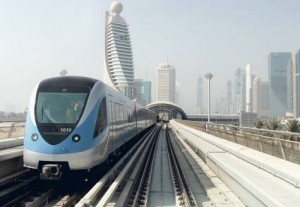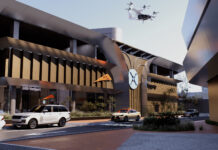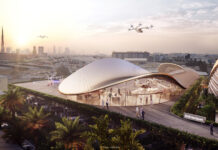By Saifur Rahman, Business Editor www.gulfnews.com
Dubai: Public-private partnership (PPP) framework a model that is yet to be tested widely in the region could spearhead the implementation of the Gulf’s large infrastructure projects to the tune of Dh438 billion ($120 billion) in which mass transit and rail systems could take a driver’s seat.

Infrastructure projects in the Gulf are usually funded by the governments and backed by the hefty oil revenues. With oil price hovering over $75 per barrel, most Gulf states will count extra from the windfall part of that is expected to be pumped into spearheading these projects.
“The private sector could play a greater role in not only bringing capital, but also technology and efficiency leading to faster implementation of these projects and lower end-user charges through PPPs,” Shahzaad Dalal, Chairman and Chief Executive Officer of Infrastructure Leasing and Financial Services (IL&FS) Investment Advisors, told Gulf News.
According to a recent study by research company Business Monitor International (BMI), rail projects will account for over 90 per cent of the $120-billion investment in the Gulf’s infrastructure projects over the next ten years.
The UAE and Saudi Arabia dominate spending on rail, road and public transportation projects to be in place by 2020. Dubai, meanwhile, has taken a lead by opening the region’s first urban rail project last year that has encouraged others to undertake similar projects. Abu Dhabi, Qatar Saudi Arabia and Kuwait are planning to start work on urban rail networks while construction of the 1,500km Union Railway is about to start this year, costing between Dh30 billion and Dh40 billion.
“Regional government policy and spending over the next ten years will define the region’s transport infrastructure. The amount allocated for investment in rail projects clearly demonstrates the region’s strategy for mass transit,” said Richard Pavitt, Director of the Roadex-Railex exhibition that will take place at the Abu Dhabi National Exhibition Centre (Adnec) on November 28-30.
The current economic slowdown has warranted the private sector’s participation in these projects. However, lack of regulations and PPP framework could hinder the move.
Dalal said: “PPPs have given momentum in infrastructure in Asian economies, especially the Far East, and the Gulf states could benefit from their learning.”
The UAE has already committed $7.6 billion in Dubai on the Metro (Red and Green lines) and another $3.26 billion on several major road projects which is in addition to a PPP with Italian construction and infrastructure company Salini Costruttori, to overhaul sections of the UAE-Saudi Arabia Highway.
Saudi network
However, Saudi Arab-ia is spending $25 billion (Dh91 billion) on its rail network adding 3,900km of track through three major projects. The first of it is the Saudi Landbridge project, a 950km railway connecting Jeddah and Dammam. Secondly the 450km Haramain high-speed, which will connect Makkah and Madinah via Jeddah and finally the North-South Railway which joins the northern mineral belt with Riyadh and Jubail.
Pavitt said: “In the UAE capital, there are plans for a $7-billion 131km monorail track, most of which will be underground. Further funds are budgeted for a high-speed rail link with Dubai freight rail corridor and new roads all scheduled for completion within the next five years.”
- $120b to be invested by GCC countries in 10 years
- $60b value of approved projects GCC network
- 450km length for proposed Haramain high-speed rail


















